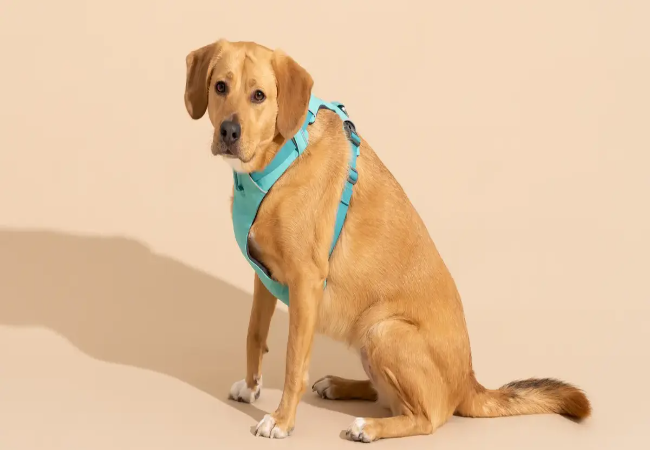When to Start a Puppy Harness: Vet-Approved Guide 2025 🐶🩺

In this article
When to Start a Puppy Harness: Vet-Approved Guide 2025 🐶🩺
By Dr. Duncan Houston BVSc
Bringing home a new puppy is exciting—but when is the right time to start using a harness? As a veterinarian and founder of Woopf, I’m often asked, “How early can I walk my puppy with a harness?” The answer: earlier than most people think—if you do it right.
This article covers the best age to start, how to choose the right harness, and the steps to make walks safe and positive from day one.
🐾 What Age Can a Puppy Wear a Harness?
Most puppies can start wearing a harness as early as 7–8 weeks old. This doesn’t mean you should head straight to the sidewalk—but it’s the perfect time to introduce the harness indoors.
Why So Early?
Puppies experience a critical socialization window from 3 to 14 weeks. During this period, introducing equipment like harnesses, collars, and leads sets the foundation for confident adult behavior.
🏥 What About Walks Outside?
Veterinarians recommend avoiding public places until 1–2 weeks after your puppy’s final vaccination (usually around 16 weeks). But that doesn’t mean leash training has to wait.
Start training indoors or in a private yard until your vet gives the all-clear.
✅ Signs Your Puppy is Ready for a Harness
- Comfortable being handled
- Curious, not fearful, about new items
- Can stay still for 3–5 seconds without squirming
🧠 Benefits of Early Harness Use
- Prevents bad habits like pulling
- Reduces the risk of injury from collars on delicate puppy necks
- Creates structure for positive walks and socialization
PubMed Insight: Research confirms that early leash handling leads to fewer behavioral issues later in life (source).
🎽 Best Puppy Harnesses (Vet Approved)
Woopf Sherpa Harness: Designed for small, growing pups with soft material and no pressure points. Great for training, socialization, and daily wear.
Explorer Harness (size S): Ideal for medium-to-large breed puppies needing durability, support, and escape prevention.
📏 How to Fit a Puppy Harness
- Use the two-finger rule between the strap and their body
- Check fit every 2 weeks—puppies grow fast!
- Adjust both chest and belly straps for balanced movement
🔄 Introducing the Harness: Step-by-Step
- Let them sniff and explore it (don’t force it)
- Touch it to their back and chest while rewarding
- Clip it on for just a few seconds, reward, then remove
- Repeat and slowly increase the time they wear it
🚫 Avoid These Puppy Harness Mistakes
- Buying too large “to grow into” – this leads to injury or escape
- Skipping slow introductions – creates fear or resistance
- Using only a collar – risk of tracheal damage or slipping out
🎁 What Else You’ll Need
- Lightweight Puppy Lead: Safe for first steps and gentle control
- Treat + Poo Bag Pouch: Reinforce good behavior on the go
Final Thoughts
A harness is more than just gear—it’s a training tool, a safety device, and a communication tool. Starting your puppy on a harness early helps prevent bad habits and keeps your walks stress-free from the very beginning.
Choose a vet-designed harness made with your growing pup in mind. You’ll be glad you did.



